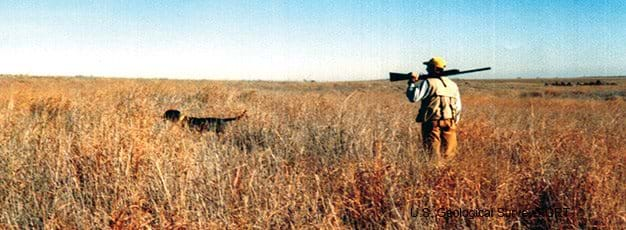Fee Hunting May Boost Farm Income, Wildlife Habitat

Hunting is a recreation activity that mostly occurs on private land, where the right to hunt is controlled by landowners. In most cases, such use of private land is arranged through personal contacts. However, some U.S. landowners market hunting opportunities by managing wildlife on their property and charging hunters a fee to access their land. In their attempts to provide hunting experiences worth paying for, these landowners may also provide a public service for those who value wildlife for reasons other than hunting.
Access to private land for hunting is becoming more limited, helping to explain recent declines in hunting participation rates, as measured by the U.S. Department of the Interior’s Fish and Wildlife Service. Encouraging more landowners to offer fee hunting can offset this trend, providing enhanced opportunities to hunters while augmenting landowners’ income. But could fee hunting also benefit game and non-game species by encouraging landowners to make improvements in wildlife habitat?
To explore this issue, ERS recently examined the implications of expanded fee hunting on land enrolled in the Conservation Reserve Program (CRP). The CRP retires environmentally sensitive cropland from production and pays the owners to plant conservation cover. The ERS study considers a nationwide program similar to existing State programs (such as those in Kansas and South Dakota) that encourage landowners to grant hunters access to their land.
The impacts of such a program were simulated using the CRP “Likely To Bid” Model, which ERS developed jointly with USDA’s Farm Service Agency. When combined with an estimate of the demand for wildlife-based recreation within each county, the model predicts changes in the type and geographic distribution of land enrolled in the CRP as landowners take fee hunting opportunities into account.
The ERS study found that hunting fees increase landowners’ willingness to participate in the CRP by supplementing CRP rental payments. An estimated 3 million acres, or 8 percent of all CRP land, would shift into counties where hunting demand is greatest. CRP payments in these counties increase by about 10 percent, reflecting both greater enrollment and higher rental rates due to an approximately 25-percent increase in the wildlife attributes of land enrolled.
In essence, where feasible, hunting fees motivate landowners to install wildlife-friendly land-use practices. On land that is eligible for the CRP, improving wildlife habitat increases the likelihood of being accepted into the program, allowing landowners to receive CRP and hunting fee income. Elsewhere, landowners may find that by improving wildlife habitat, they can provide higher quality hunting experiences—thereby generating higher hunting fee income.
The Use of Markets To Increase Private Investment in Environmental Stewardship, by Marc Ribaudo, LeRoy Hansen, Daniel Hellerstein, and Catherine Greene, USDA, Economic Research Service, September 2008


